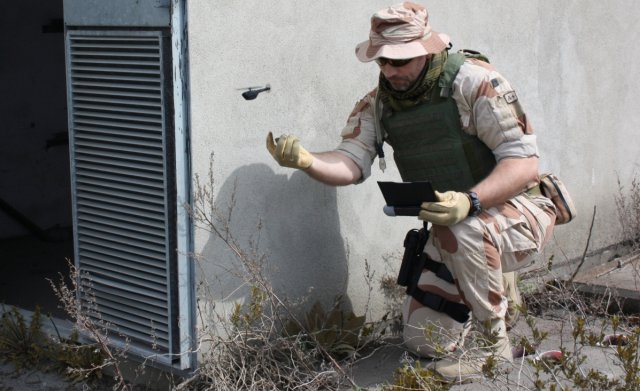 Black Hornet – Photo: Prox Dynamics
Black Hornet – Photo: Prox Dynamics
The US Army wants to buy two pocket-sized unmanned aircraft systems with miniature cameras to experiment with in advance of a capability demonstration of nano UAS for small units, according to a service spokesman.
The UAS the Army wants are Black Hornets, tiny helicopters that can fit in the palm of a hand. The systems are made by Norwegian-based company Prox Dynamics AS. The service announced its intent to buy the two systems in a Jan. 29 notice posted to the Federal Business Opportunities website, which notes the company is the sole source for the technology.
While Prox Dynamics would not discuss any possible sale to the U.S. Army, the PD-100 Black Hornets are already in service with the British Army in Afghanistan.
“The major difference between the Black Hornet and all other systems is the extreme small size as the aircraft weighs only 16 grams, thus being the world’s first operational nano system,” said company spokesman Ole Aguirre.
The procurement of the two Black Hornet UAS “is one of the early steps of our recently initiated Cargo Pocket Intelligence, Surveillance and Reconnaissance (CPISR) effort,” Army Natick Soldier Research, Development and Engineering Center spokesman David Accetta wrote in a Feb. 6 statement. The Black Hornets will be procured under the Research, Development and Engineering Command Foreign Technology Assessment Support programme. The effort will feed into what he called the “Technology-enabled Capability Demonstration 1b Force Protection – Soldier/Small Unit.”
The goal of the programme, Accetta noted, “is to develop an unmanned/unattended sensor that can be used at the squad level to collect imagery to improve soldiers’ situational awareness.”
Other small unmanned aircraft system assets the Army uses — such as Aerovironment’s Raven — are not available at the squad level, said Accetta. “Squads have no organic ISR capability when conducting operations,” he said.
The intent in testing the nanocopters is to assess “this unique foreign technology and get a surrogate nano UAS system in our hands for familiarization of all the capabilities and limitations associated with a platform of this size,” Accetta wrote.
Following the assessment, the service will “canvass the user community to glean needs, relative to what is capable with a nano-scale system,” he said.
While the Black Hornets are being used initially to help define requirements, it is still “far too early” to determine what type of system the Army could end up using in the field, according to Accetta. The service will look at a variety of system attributes from rotary-wing to fixed-wing to bio-inspired or some type of hybrid, he said.
The Black Hornet, which can fly for up to 30 minutes, has a digital data link and can be operated via GPS navigation or video. It features an autopilot function with autonomous or directed modes, as well as the capability to hover and stare, and perform automatic search patterns or travel pre-planned routes, according the specifications listed on Prox Dynamics’ website. The nanocopter has a steerable electro-optical camera and can take live video or snapshot images.
Source: Inside Defense
